A Super Fanless Chassis from TureMetal: For DIY & 0 db Workstations
by Anton Shilov on June 20, 2019 11:00 AM EST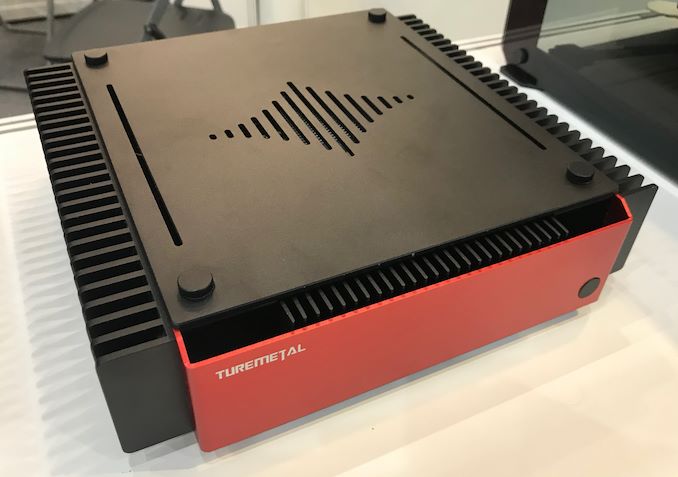
High-performance and DIY desktop computers use either sophisticated air or liquid cooling systems. While there are passively cooled PCs, they typically are either proprietary or work with a limited set of components. Mical Wong, an enthusiast from Shanghai, decided to change that and founded TureMetal Fanless Design Studio, which builds cases for fanless DIY desktops. TureMetal was at Computex this year to show off its latest designs.
TureMetal currently offers five fanless PC cases: the DP2, UP7, UP3, UP5, and UP10, all aimed at different kinds of systems. Three of them are designed for smaller desktops that do not need a lot of compute horsepower, but two of them can be used to build high-performance gaming or workstation PCs with discrete graphics, plenty of storage space and so on.
All the enclosures use the same cooling principle: transfer heat from the key components to large radiators located on the sides of the chassis using heat pipes, almost in effect using the whole chassis as a heatsink. The main advantage – and the main selling point of all cases from TureMetal – is that they are adjustable, with movable vapor chambers to allow the cooling system to match the layout of the installed motherboard.
We are going to start from TureMetal’s cases for lower-power systems. The smallest DP2 chassis only supports Mini-ITX motherboards, can cool down a 50 ~ 70W CPU with integrated graphics, and uses a proprietary PSU. The larger UP3 case is compatible with Mini-ITX platforms carrying a CPU with up to 85 W TDP, but also does not support a standalone video card. The UP7 enclosure looks like a typical Mini-ITX system, can work with appropriate motherboards and can house a discrete graphics card (yet, the unit does not support passive cooling of a GPU natively). It is noteworthy that all of their cases can work with a variety of Mini-ITX motherboards, thanks in big part to its adjustable CPU vapor chambers.
TureMetal’s UP5 and UP10 chassis are considerably larger yet considerably more sophisticated than the other boxes. Both can cool down higher-end CPUs and GPUs and house multiple storage devices. The UP5 can accommodate a Mini-ITX or Micro-ATX motherboard and cool down a performance-mainstream CPU and GPU.
By contrast, the UP10 can house an ATX mainboard. Furthermore, the UP10 can remove 120 ~ 180 W of heat from a CPU as well as 170 ~ 250 W of heat from a GPU, enough for HEDT processors and top-of-the-range graphics cards.
The UP5 and UP10 chassis from TureMetal are naturally the most versatile cases from the company yet as they can accommodate a variety of components and enable a great variety of PCs: from utterly quiet HTPCs to advanced 0 dB fanless workstations.
In addition to its desktop form-factor cases, TureMetal is also developing a tower case that will be rated for an even higher TDP and thus enable even faster PCs. The case is due sometime in 2020, but the company isn't disclosing any firm launch dates.
Right now, TureMetal’s cases can only be bought directly from the company or from Taobao. The manufacturer hopes that as it gets better known, it will gain retail partners in Asia, Europe, and the US, so its cases will be more widely available.
| Want to keep up to date with all of our Computex 2019 Coverage? | ||||||
 Laptops |
 Hardware |
 Chips |
||||
| Follow AnandTech's breaking news here! | ||||||




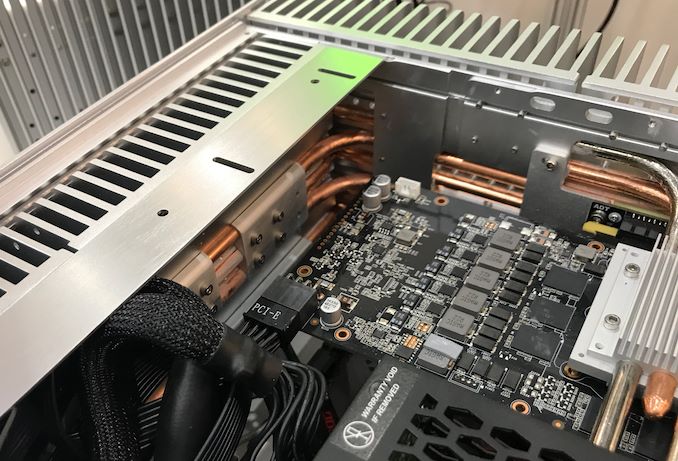

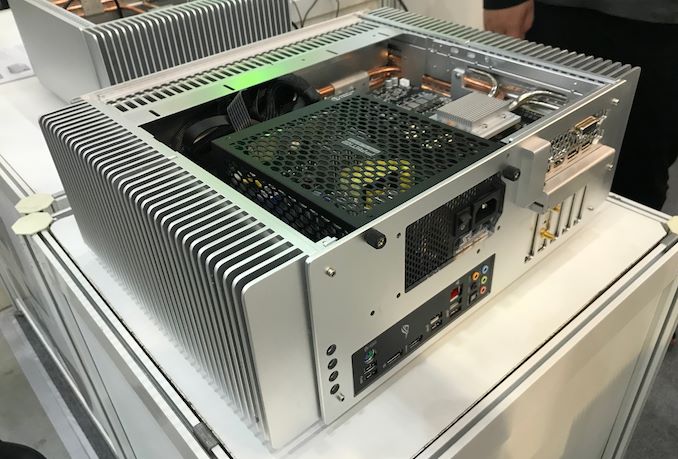
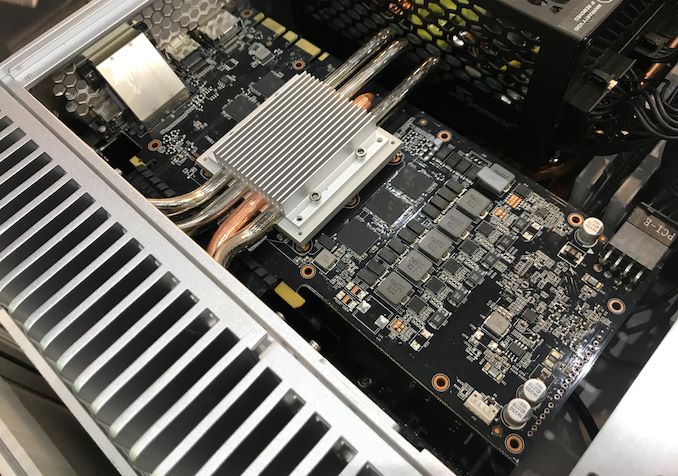
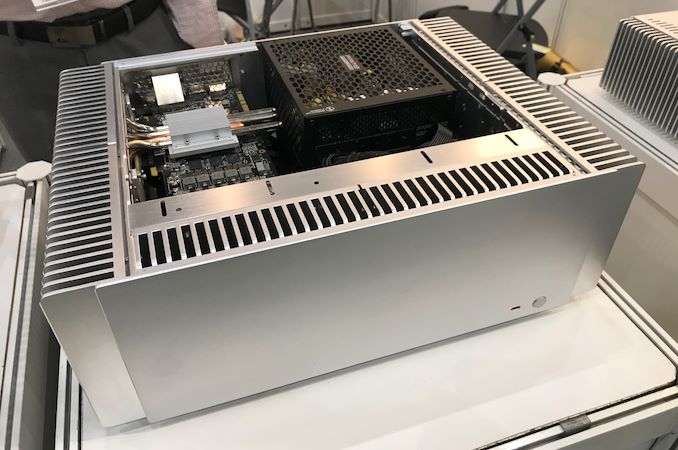
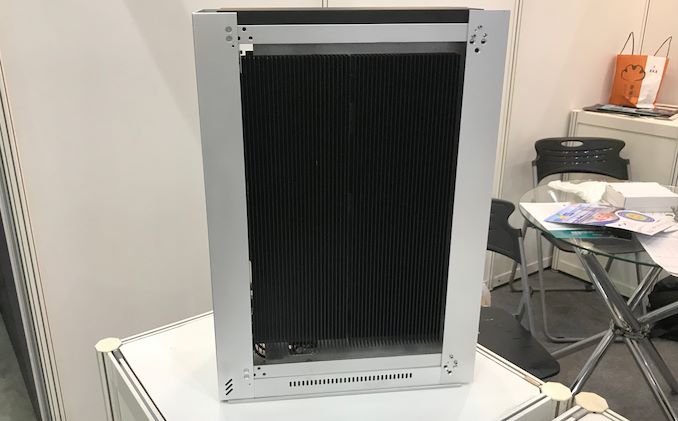
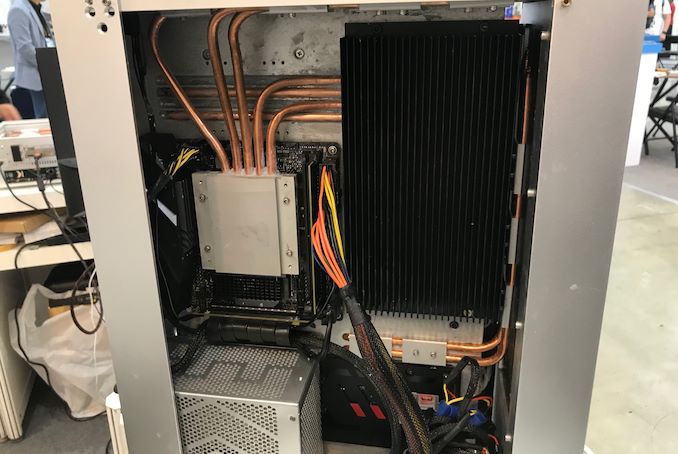








51 Comments
View All Comments
lanless - Thursday, June 20, 2019 - link
I hate to be that guy (a blatant lie, I love it) but 0dB doesn't mean noiseless. It's a log scale; a truly noiseless system would be negative infinity dB, 0dB just means it's exactly as noisy as some reference level.JanW1 - Thursday, June 20, 2019 - link
Yes, and when talking about PC noise the reference level is usually chosen to be the background noise at the place where the PC is installed. Which means that the PC + background is exactly as noisy as the background alone. Isn't this what we understand by a noiseless PC?I'm pretty sure no one expects their PC to remove noise from the environment where you install it, so this is the best that can be done.
peevee - Thursday, June 20, 2019 - link
Actually, a set of noise-cancelling mic/speaker elements could be the easiest solution to noise.I am more concerned about reliability and dust collection property of fans.
ajp_anton - Thursday, June 20, 2019 - link
0dB isn't just "some reference", the reference is well defined and so 0dB refers to a specific sound pressure level.Also, dB doesn't add easily because of the logarithmic scale. If PC + background is exactly as noisy as the background, the PC needs to be -inf dB.
JanW1 - Friday, June 21, 2019 - link
That is true if an _absolute_ sound pressure level is expressed in dB. Absolute sound pressure level is used to measure sound exposure at a given location or under certain circumstances (for example at a work place).Decibel can also be used to express _changes_ in a value. Due to the way sound pressures from various sources add, this is the preferred way to express the noise generated by a device, which will never be the sole source of noise. The absolute sound pressure level you will be exposed to will be the sum of the absolute sound pressure level at the location where you install the device plus the contribution of the device expressed as a change in sound pressure level. This case seems to be advertised to induce a change in SPL of 0dB - its silent.
The reason this is likely not true for a real system using these cases will be coil whine, which is always present in components, to various degrees. Most of the time it is actually audible.
Icehawk - Friday, June 21, 2019 - link
Every silent thread I read this and yet neither my 6yr old or 1.5yr old fanless PSU systems make any coil whine noise - or if they do it's not enough to be audible in a quiet room from outside of the case.ajp_anton - Friday, June 21, 2019 - link
So what you're saying is that a "5dB" device will just add 5dB to the already present sound level?A very silent fan could very well increase the sound level from 0dB to 5dB. But that same fan will also change it from 3dB to 5dB. And from 30dB to 30dB. And from -50dB to 5dB. Is this a 5dB fan or a 0dB fan or a 55dB fan?
mode_13h - Sunday, June 23, 2019 - link
It's logarithmic, so addition is used to apply gain or attenuation.When computing the combined SPL of multiple noise sources, unless they're close in magnitude, I think you can safely just take the maximum of the two.
ajp_anton - Sunday, June 23, 2019 - link
I know. As you can see, I just chose the "maximum of the two" in all cases.0+5=5
3+5=5
30+5=30
-50+5=5
Proving that you can't just market a sound source to "add x decibels" to the existing sound. 0dB can't mean "no change to the existing sound", because 0dB is louder than -50dB and the resulting noise will be 0dB.
mode_13h - Friday, June 21, 2019 - link
< 0 dB doesn't mean it removes noise, but rather that it's below the reference level. Of course, measuring that would need to be done in a different way or space than where you measured the reference level, but it needn't involve "removing noise from the environment".As for why a < 0 dB rating could be desirable - consider that acoustic measurements typically involve A-weighted equalization, yet human hearing extends well outside this range.
Just because something has a 0 dB rating therefore doesn't mean it's completely inaudible. There could be higher-pitched noises, emanating from the heat pipes, for instance. A friend of mine has just such a complaint about his fanless laptop/convertible. Either that, or perhaps its coil whine. I haven't heard it, but he thinks it's the heat pipes.